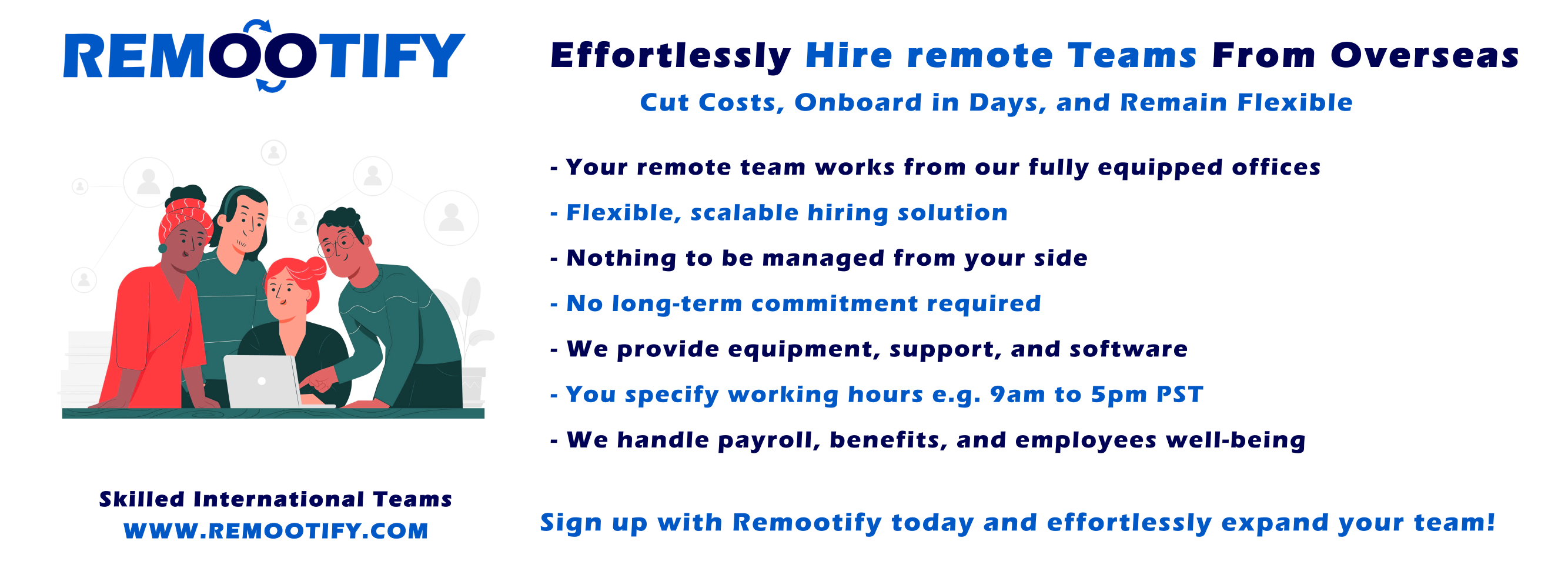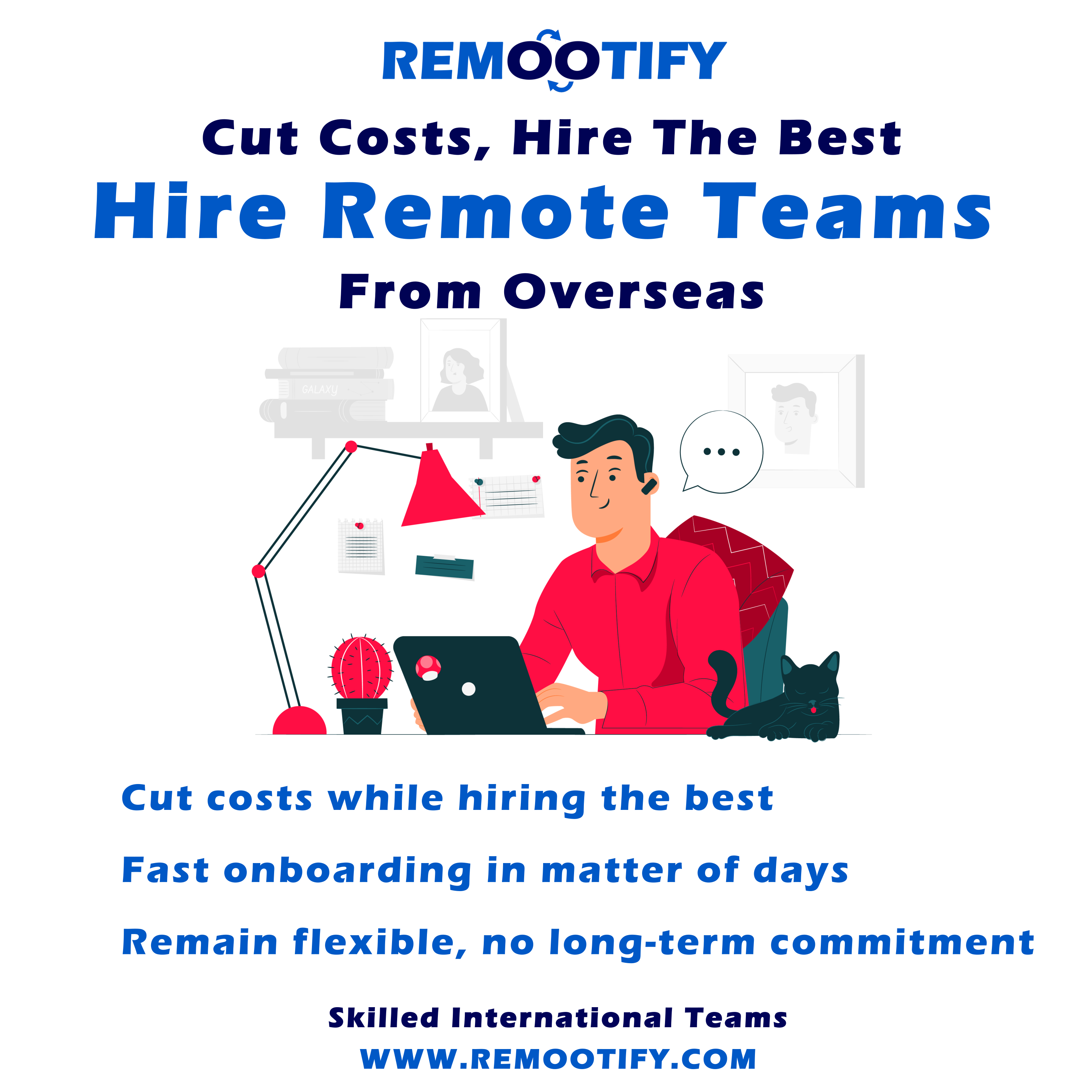Start hiring YOUR REMOTE TEAM, Today!
Enter your information below to start a discussion with one of our team members!

In the rapidly evolving landscape of human resources (HR), organizations are constantly seeking innovative ways to streamline their operations and enhance efficiency.
The emergence of Cloud-based Human Resource Information Systems (HRIS) has ushered in a new era of HR management, offering unprecedented opportunities to optimize processes and transform the employee experience.
This article delves into the realm of Cloud-based HRIS, shedding light on its significance, functionalities, and the profound impact it has on revolutionizing HR operations.
Understanding Cloud-Based HRIS
| Aspect | Description |
|---|---|
| Cloud-Based HRIS | Software for HR processes and employee data management. |
| Cloud Technology | Relies on remote servers accessed via the internet. |
| Functions | Centralizes payroll, records, time tracking, benefits, and more. |
| Accessibility | Enables secure data access from anywhere with internet connectivity. |
| Collaboration | Promotes teamwork via shared access and real-time collaboration. |
| Automation | Streamlines operations by automating tasks and workflow processes. |
| Reduced Maintenance | Minimizes infrastructure upkeep, as the cloud provider manages servers. |
| Benefits | Enhances efficiency, data security, and collaboration in HR activities. |
Exploring Cloud Computing and HRIS
Cloud computing refers to the delivery of various computing services over the Internet, enabling individuals and organizations to access and use a wide range of resources without the need for extensive local hardware and software infrastructure.
These services include computing power, storage, databases, networking, software, and more. Instead of owning and managing physical servers and data centers, users can utilize the cloud to efficiently scale resources up or down as needed, paying only for what they use.
Here are some key concepts and components of cloud computing:
- On-Demand Access: Cloud services are available on-demand and can be rapidly provisioned and released. Users can easily scale resources to accommodate fluctuations in demand without significant upfront investments.
- Resource Pooling: Cloud providers maintain a pool of computing resources, such as processing power, memory, and storage. These resources are shared among multiple users and dynamically allocated based on demand.
- Elasticity: Cloud resources can be scaled up or down quickly and easily. This ensures that applications have the necessary resources to handle peak loads without over-provisioning during quieter periods.
- Pay-as-You-Go: Users pay for the resources they use, similar to a utility bill. This pricing model eliminates the need for large upfront capital expenditures and allows for cost-effective resource management.
- Service Models
- Infrastructure as a Service (IaaS): Provides virtualized computing resources over the internet. Users can rent virtual machines, storage, and networking components.
- Platform as a Service (PaaS): Offers a platform and environment where developers can build, deploy, and manage applications without dealing with the underlying infrastructure.
- Software as a Service (SaaS): Delivers software applications over the internet, typically accessed through a web browser. Users can use software without installing or maintaining it locally.
- Deployment Models
- Public Cloud: Services are offered over the public internet and shared among multiple users and organizations.
- Private Cloud: Resources are dedicated to a single organization and can be hosted on-premises or by a third-party provider.
- Hybrid Cloud: Combines elements of public and private clouds, allowing data and applications to be shared between them.
Make sure to know what you need for your business, private, public, or hybrid cloud.
- Security and Compliance: Cloud providers implement various security measures to protect data and ensure compliance with regulations. However, the responsibility for security is often shared between the provider and the user.
- Scalability: Cloud services can easily scale vertically (increasing the power of a single resource) and horizontally (adding more resources) to handle changing workloads.
- Global Reach: Cloud services can be accessed from anywhere with an internet connection, enabling collaboration and remote work.
Prominent examples of cloud service providers include Amazon Web Services (AWS), Microsoft Azure, Google Cloud Platform (GCP), and IBM Cloud.
Key Components and Features of a Comprehensive Cloud-Based HRIS System
- Employee Database Management
- Centralized storage of employee information.
- Personal details, contact information, employment history, etc.
- Accessible and updatable by authorized personnel.
- Self-Service Portals
- Employee self-service portal for updating personal information.
- Managers can approve leave requests, performance reviews, etc.
- Reduces administrative burden on HR staff.
- Recruitment and Onboarding
- Job posting, applicant tracking, and resume management.
- Digital onboarding processes, including e-signatures and document submission.
- Automated workflows for new hire orientation.
- Time and Attendance Tracking
- Recording and managing employee work hours.
- Integration with biometric systems, time clocks, or mobile apps.
- Generation of timesheets and attendance reports.
- Payroll Management
- Automated calculation of employee salaries, taxes, and deductions.
- Integration with attendance and leave data.
- Direct deposit, pay stub access, and tax form generation.
- Benefits Administration
- Managing employee benefits, such as health insurance and retirement plans.
- Enrollment, tracking, and updates related to benefits.
- Integration with insurance providers and retirement fund managers.
- Performance Management
- Goal setting, performance reviews, and feedback mechanisms.
- Performance appraisal workflows and documentation.
- Data-driven insights for employee development.
- Learning and Development
- Access to training materials, courses, and resources.
- Tracking of employee skill development and certifications.
- Integration with external learning platforms.
- Analytics and Reporting
- Data-driven insights into workforce trends and metrics.
- Customizable reports on employee demographics, turnover, etc.
- Supports strategic decision-making by HR and management.
- Compliance and Security
- Ensuring data security and privacy regulations (GDPR, HIPAA, etc.).
- Regular software updates and security patches.
- Access controls and permissions management.
- Integration Capabilities
- Integration with other enterprise systems (ERP, CRM, etc.).
- APIs for connecting with third-party tools and services.
- Seamless data flow between HRIS and other business functions.
- Mobile Accessibility
- Accessible via mobile devices for remote and on-the-go use.
- Mobile app features for leave requests, time tracking, etc.
- Scalability and Flexibility
- Ability to scale as the organization grows.
- Customizable modules and features to fit specific needs.
- Cloud-based infrastructure provides flexibility in usage and storage.
The Impact of Cloud-Based HRIS on Streamlining HR Operations
A. Improved Data Management and Accessibility
- Centralized employee data
- All employee information is stored in a single, secure cloud-based database.
- Eliminates data duplication and inconsistencies across multiple systems.
- Real-time updates and access
- HR staff can instantly access and update employee records from any location.
- Ensures the accuracy of the information for payroll, benefits, and compliance purposes.
B. Enhanced Efficiency in Processes
- Automated workflows
- Routine tasks like leave requests, expense approvals, and performance reviews are automated.
- Reduces manual intervention, minimizes errors, and accelerates processes.
- Self-service portals for employees
- Employees can independently access and update personal information, reducing HR’s administrative load.
- Quick access to pay stubs, tax forms, and benefits selections enhances employee satisfaction.
C. Effective Talent Management
- Streamlined recruitment and onboarding
- Cloud-based HRIS facilitates job posting on multiple platforms and tracks applicant data.
- Digital onboarding forms, training materials, and e-signatures streamline the joining process.
- Continuous performance tracking and feedback
- Regular performance assessments are recorded digitally for managers and employees to review.
- Feedback exchange and goal-setting are integrated into the system for ongoing development.
D. Strategic Decision-Making
- Data-driven insights
- Robust reporting tools provide visual representations of HR metrics and trends.
- Helps HR identify areas for improvement, such as turnover rates or training effectiveness.
- Predictive analytics for workforce planning
- Utilizes historical data to forecast future workforce needs and skills gaps.
- Enables proactive recruitment, training, and succession planning.
Advantages of Implementing a Cloud-Based HRIS for Remote Businesses
- Scalability: Cloud-based HRIS allows remote businesses to easily scale their HR operations up or down without the need for extensive infrastructure changes, accommodating changes in workforce size and business growth.
- Accessibility: Being cloud-based, HRIS systems are accessible from anywhere with an internet connection, enabling remote businesses to manage HR tasks, employee data, and processes regardless of their physical location.
- Collaboration: Cloud-based HRIS fosters collaboration among remote teams by providing a centralized platform for sharing HR-related information, documents, and updates, enhancing communication and teamwork.
- Real-time Updates: Cloud-based systems offer real-time data updates, ensuring that remote HR teams and managers have access to the most current employee information, performance metrics, and compliance data.
- Data Security: Cloud-based HRIS providers often implement robust security measures to protect sensitive employee data, offering encryption, access controls, and regular security updates, which can be especially crucial for remote businesses dealing with dispersed data.
- Cost Efficiency: Adopting a Cloud-Based HRIS eliminates the need for investing in on-premises hardware and maintenance, reducing capital expenditures and ongoing operational costs.
- Automatic Backups: Cloud-based systems often provide automated data backups and disaster recovery options, ensuring that critical HR data is safe and can be restored in case of unexpected events.
- Global Accessibility: For remote businesses with international teams, Cloud-Based HRIS can adhere to compliance regulations across different jurisdictions, helping businesses manage diverse legal and regulatory requirements.
- Mobile Compatibility: Cloud-based HRIS platforms typically offer mobile apps or responsive web interfaces, enabling remote employees and managers to access HR information and perform tasks on-the-go using their smartphones or tablets.
- Analytics and Reporting: Cloud-based HRIS systems often include advanced analytics and reporting features, allowing remote businesses to gain insights into HR trends, performance metrics, and other data to inform strategic decision-making.
- Integration Capabilities: Cloud-based systems can often be integrated with other business tools and software, enhancing efficiency by streamlining processes and reducing manual data entry.
- Scalability: Cloud-based HRIS can easily accommodate the growth of remote businesses without requiring substantial upgrades or changes to the infrastructure.
- Remote Support: Cloud-based HRIS providers usually offer remote support and updates, ensuring that the system remains functional and up-to-date for remote teams without needing on-site technical assistance.
- Reduced IT Burden: With a Cloud-Based HRIS, remote businesses can rely on the provider’s IT infrastructure and support, reducing the burden on their own IT teams and resources.
- Continuous Improvements: Cloud-based software is often updated regularly by providers, ensuring that remote businesses benefit from the latest features, enhancements, and compliance changes without the need for manual updates.
- Streamlined Onboarding: Cloud-based HRIS systems facilitate remote onboarding processes by allowing new employees to complete documentation, training, and orientation tasks digitally from any location.
- Remote Training: Cloud-based systems can be used to conduct remote training and development programs for employees, ensuring continuous learning and skill enhancement across dispersed teams.
Implementing an HRIS for Efficient Virtual Work Environments
—
Conclusion
In a landscape of evolving HR practices, Cloud-based HRIS emerges as a transformative force. With its versatile features and data-driven insights, it streamlines operations and empowers strategic decisions.
As businesses embrace this evolution, Cloud-based HRIS reshapes employee experiences and propels HR into a new era of efficiency and collaboration.
—
FAQs
What is Cloud-Based HRIS?
Cloud-Based HRIS centralizes HR processes and employee data using internet-accessed servers, streamlining operations and enabling real-time updates.
How does Cloud-Based HRIS benefit businesses?
Cloud-Based HRIS enhances efficiency, data security, collaboration, and accessibility. It automates tasks and provides data-driven insights.
How does Cloud-Based HRIS impact HR operations?
It improves data management, enhances efficiency, supports talent management, and aids strategic decision-making.





